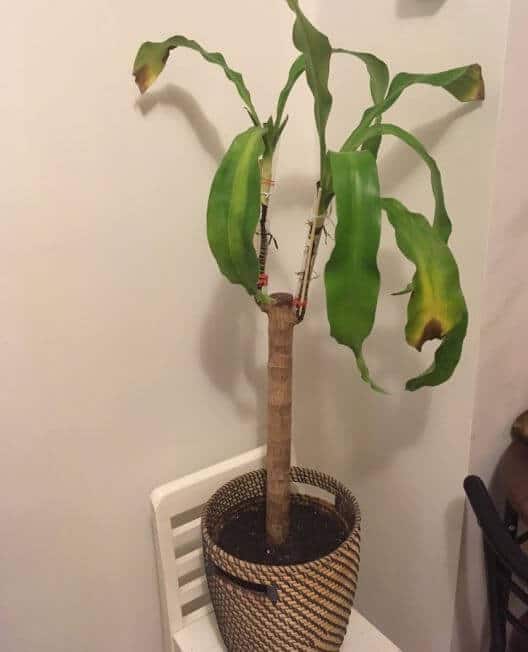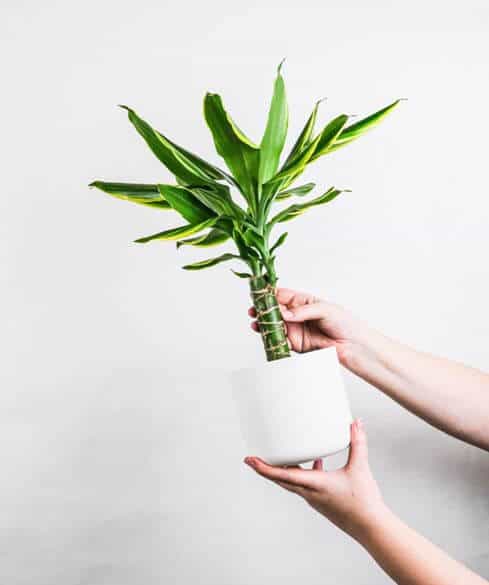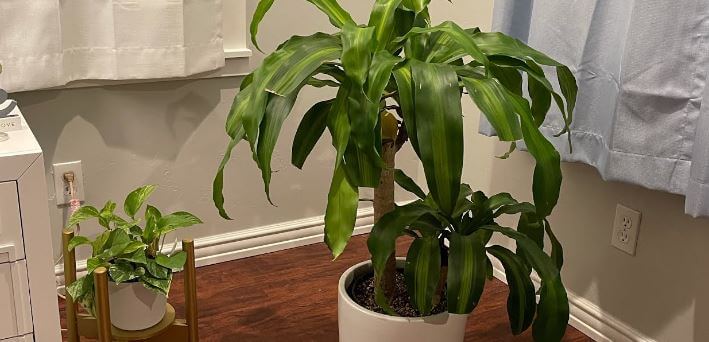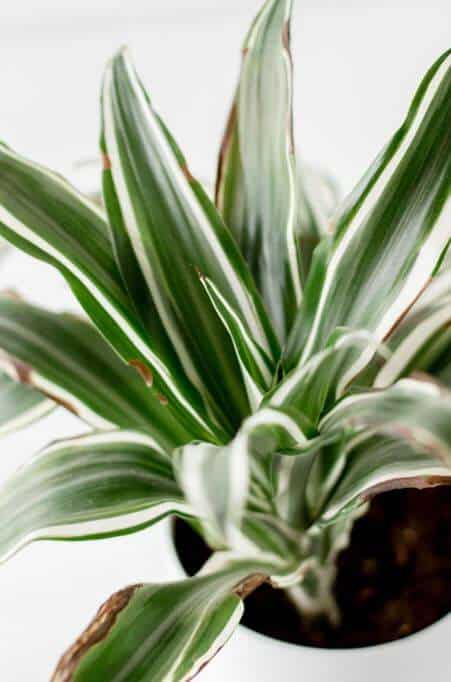Last Updated on October 3, 2023 by a Friendly Gardener
Corn plants, or the Dracaena fragrans, are flowering plants that mainly grow in the tropical parts of Africa, although they are now also popular houseplants. It gets its name from its long leaves that resemble the stems of corn.
These plants usually grow slowly and are quite simple to care for. However, it is still quite possible for the plant to embark on a slow death, which usually starts out with the leaves changing color and texture.
To figure out how to save a dying corn plant, you can go through the following problems that might occur as well as how to solve them.
What to Look Out For
Monitor your corn plant regularly and look out for the following signs that could indicate that the plant is dying.
Drooping Yellow Leaves

If the lush green leaves of the corn plant seem to be drooping and turning yellow, then the culprit here might be overwatering which may have caused the plant to develop root rot due to fungal growth.
Rough Leaves
If your leaves are changing color and becoming yellowish-brown while also becoming rough in texture, then this might be occurring because of insufficient watering, causing the plant to dry up considerably. This might lead to a crunchy sound if you try to touch the leaves, making them tear or flake into small pieces.
Too much fertilizer might lead to this as well, especially since a corn plant does not require too much of it.
Brown and White Marks
If you notice huge brown marks on the leaves of the plant, then this might be because of excess sunlight, causing the leaves to burn.
If there are white marks or lines that accompany brown tips on the leaves, then the problem might be with chemicals in the water or soil. There might also be inconsistent humidity around the plant.
Dark Patches
Dark patches that also have a bit of bumpiness to them might be a result of certain pests on the plant. Such pests like scales gathering on the leaves can result in damage to the leaves and usually occur due to easy access or improper care conditions.
How to Save a Corn Plant from Dying

Now that you are aware of the signs and symptoms of dying corn plants as well as what causes them, it is time to figure out how exactly you can start taking measures to revive them.
Let’s go through the steps and methods involved in this process.
Determine the Cause
To make sure that you take the right measures to save your dying corn plant, you will need to figure out the exact cause. Observe the plant and see the signs it is exhibiting so that you can understand what to do.
Identifying the incorrect cause might end up worsening the issue even more.
Cut/Trim the Dying Parts
If there are visible parts of the plant that are dying, then the simplest solution here is to cut or trim them off. Usually, the issue might be with the leaves turning completely brown or yellow, so take some shears and cut these dead leaves off.
When you are cutting them off, you will need to exercise caution. Cut off the leaf entirely and also cut off parts of the stem that have turned brown. If the stem is alright, then cut as close to the stem as possible.
Make sure you do not end up cutting the stem too much since you will need to leave the stump as it is otherwise new and healthy growth might not take place as desired.
This is a good way to ensure that the dying parts do not spread across the entire plant.
Get Rid of Pests and Diseases
Some common pests and diseases that affect a corn plant, apart from root rot, can include thrips, flakes, fluoride toxicity, soft rot, mites, aphids, and several others.
In the case of pests, you should attempt to get rid of them using insecticides and pesticides, natural oils, dish soap or drops of milk.
To avoid and get rid of diseases, you should simply ensure that you are providing the right care conditions to it. Make adjustments if required.
Repot the Plant

Once you are done carrying out one or more of the aforementioned steps, you should also consider repotting the plant completely, especially if the damage was widespread in the corn plant. This kind of repotting can help ensure that the damage does not spread so that the plant can grow in fresh and healthy conditions once again.
If you are growing it in a pot or container, then make sure that you carefully remove the plant from the soil and remove any other damaged leaves or roots that you notice.
Prepare the new pot and ensure it is slightly larger than the previous one so that the roots can grow freely. Add suitable potting mix and carefully lower your plant in the soil without damaging the roots. Keep the soil moist.
Provide Proper Care Conditions
Caring for the corn plant properly is extremely important to prevent it from dying while trying to revive it. You can go through the conditions below.
-
Light
Provide bright but indirect sunlight with temperatures around 60-75℉. Bring the plant indoors if temperatures fall beyond this range.
-
Watering and Humidity
The soil should remain moist but not wet. It should also not dry out completely. Humidity should be around 40-50%. Reduce watering in winter.
-
Soil
Use loose and loamy soil that has good drainage. The pot should have a drainage hole as well. The soil pH should be around 0-6.5.
-
Fertilizing
Use balanced and mild fertilizer once in two months during the growing season.
-
Pruning
Prune the leaves at the bottom regularly, along with the upper parts of the canes.
Final Remarks
Now that you know how to save a dying corn plant, you can go ahead and try to revive your own plant. Make sure you take time to figure out the exact cause so that you can then take the essential, crucial, and accurate steps to save the plant.

